917834
PhotoCol™-RUT, methacrylated collagen bioink kit, with ruthenium
Sinónimos:
3D Bioprinting, Bioink, Collagen
About This Item
Productos recomendados
descripción
Methacrylated collagen:
Degree of methacrylation ≥ 20%
Product components :
Methacrylated collagen (100 mg)
20 mM acetic acid (50 mL)
Neutralization solution (10 mL)
Ruthenium (100 mg)
Sodium persulfate photoinitiator (500 mg)
Nivel de calidad
esterilidad
sterile; sterile-filtered
impurezas
≤10 EU/mL Endotoxin
temp. de almacenamiento
2-8°C
Aplicación
Información legal
Frases de peligro
Consejos de prudencia
Clasificaciones de peligro
Aquatic Chronic 2
Código de clase de almacenamiento
10 - Combustible liquids
Certificados de análisis (COA)
Busque Certificados de análisis (COA) introduciendo el número de lote del producto. Los números de lote se encuentran en la etiqueta del producto después de las palabras «Lot» o «Batch»
¿Ya tiene este producto?
Encuentre la documentación para los productos que ha comprado recientemente en la Biblioteca de documentos.
Nuestro equipo de científicos tiene experiencia en todas las áreas de investigación: Ciencias de la vida, Ciencia de los materiales, Síntesis química, Cromatografía, Analítica y muchas otras.
Póngase en contacto con el Servicio técnico









